South Sudan is considered one of the poorest countries in the world. It is located in East-Central Africa, has a population of around 12 million people, and covers an estimated area of 644,330 square kilometers. Juba serves as the capital, and the country gained independence from Sudan on July 9, 2011, facing ongoing challenges such as internal conflicts and economic cricis despite its significant oil resources.
Identifying the poorest country in the world demands a deep dive into global economic landscapes. To understand why some countries are really poor, we need to look closely at things like how they handle money, share resources, and trade with other nations. By digging into these details for the top 10 poorest countries in the world, we can uncover the many challenges these countries face, giving us a clearer picture of why their economies are struggling.
In this article, we have covered the list of the top 10 poorest countries in the world, sorted by their GDP(Gross Domestic Product) and PPP(Purchasing Power Parity), economic challenges, and disparities across the globe. We have covered the deep realities of the poorest countries in the world, examining factors such as income inequality, development struggles, and the impact of international aid on these nations’ socioeconomic status.
Let’s get a closer look at these and identify the poorest country in the world based on GDP.

List of Top 10 Poorest Countries In The World
The following is a list of the top 10 poorest countries in the world as per the December 2023 survey, sorted by their GDP:
- South Sudan – 3.9 billion dollars
- Burundi – 3.4 billion dollars
- Central African Republic – 2.2 billion dollars
- Somalia- 7.5 billion dollars
- Democratic Republic of the Congo- 42.6 billion dollars
- Mozambique- 3.3 billion dollars
- Niger- 9.2 billion dollars
- Malawi- 6.9 billion dollars
- Chad – 10.9 billion dollars
- Liberia – 10.9 billion dollars
Source: International Monetary Fund, World Economic Outlook April 2023.
1. South Sudan
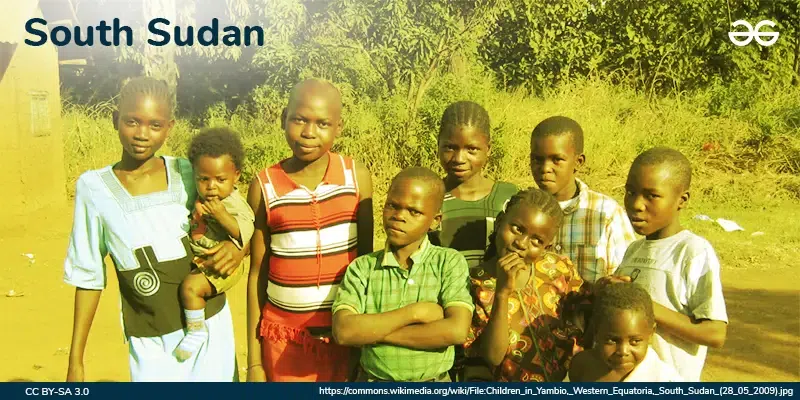
South Sudan
- GDP: $3.9 billion
- Population: 11,104,916
- Regional Culture: Diverse ethnicities with a rich mixture of traditional customs.
- Government Name: Republic of South Sudan
- Main Source of Income: Heavily dependent on oil exports.
- Cause of Poverty: Extensive conflict and political instability, hindering economic development.
South Sudan, which is the world’s youngest country, achieved independence in 2011, but it is currently dealing with huge financial challenges. Political insecurity, frequent tensions, and a lack of infrastructure all hamper its growth.
The majority of its population is dependent on their traditional agriculture due to war and harsh weather occasions often damaging their crops, keeping poverty in this island nation of over 11 million people.
2. Burundi
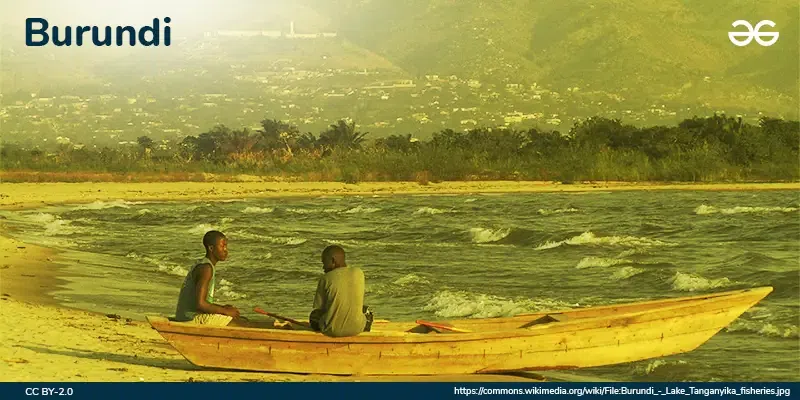
Burundi
- GDP: $3.4 billion
- Population: 13,269,272
- Regional Culture: Ethnically diverse with a mixture of Hutu, Tutsi, and Twa communities.
- Government Name: Republic of Burundi
- Main Source of Income: Agriculture, with subsistence farming dominating the economy.
- Cause of Poverty: Factors include political unrest, civil conflict, and agricultural challenges contributing to economic struggles.
Burundi, which is a small mountainous country in East Africa, is facing important economic problems such as political fear, violence, and poor infrastructural development. Rapid population expansion increases the nation’s economic difficulties and the hardships faced by its residents. Food insecurity is unexpectedly high in comparison to other Sub-Saharan African countries, with about 80% of the population depending on farming for survival.
3. Central African Republic

Central African Republic
- GDP: $2.2 billion
- Population: 5,757,091
- Regional Culture: Rich cultural diversity with various ethnic groups and traditional practices.
- Government Name: Central African Republic
- Main Source of Income: Predominantly agriculture, with minerals and forestry contributing to the economy.
- Cause of Poverty: Ongoing political instability, armed conflicts, and economic challenges leading to widespread poverty.
The Central African Republic, a small country located in Central Africa, is often considered the poorest country in the world. It tends to face serious financial challenges because of political insecurity, military conflicts, and lack of infrastructure. The country’s abundance on gold, oil, uranium, and diamonds compares sharply with its residents’ severe poverty.
4. Somalia
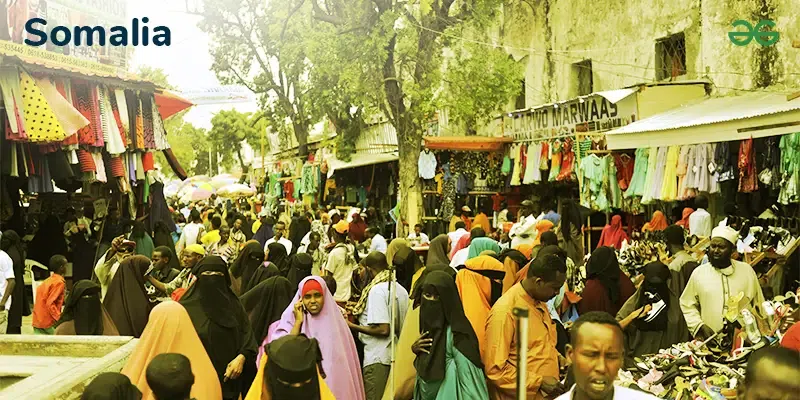
Somalia
- GDP: $7.5 billion
- Population: 18,192,151
- Regional Culture: Diverse ethnicities with a strong influence of nomadic pastoral traditions.
- Government Name: Federal Republic of Somalia
- Main Source of Income: Livestock, remittances, and telecommunications services.
- Cause of Poverty: Ongoing conflict, political instability, and limited infrastructure stopping economic development.
The United Nations classifies Somalia as a least developed country, with agriculture providing the majority of the country’s income. The country’s progress has been hampered by the lack of a functioning central government, insufficient infrastructure, and severe poverty. Also, years of political insecurity, armed conflicts, and natural disasters have affected Somalia.
5. Democratic Republic of the Congo
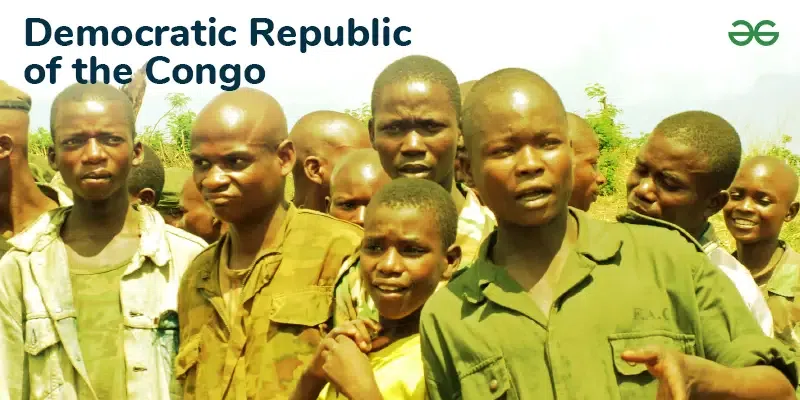
Democratic Republic of Congo
- GDP: $42.6 billion
- Population: 102,553,019
- Regional Culture: Diverse ethnic groups with rich cultural heritage and traditional practices.
- Government Name: Democratic Republic of the Congo
- Main Source of Income: Abundant natural resources, including minerals and agriculture.
- Cause of Poverty: Enduring conflict, political instability, and economic mismanagement contributing to widespread poverty.
Democratic Republic of the Congo, despite its abundance of natural resources such as cobalt and copper, faces major economic issues and is often seen as the poorest country in the world.
In the Democratic Republic of Congo, primary requirements focus on food security. A shocking 62% of the population lives on less than $2.15 per day, while conflict and disasters keep adding to the food situation.
6. Mozambique

Mozambique
- GDP: $3.3 billion
- Population: 33,980,890
- Regional Culture: Diverse ethnic groups with a mixture of Bantu, Swahili, and indigenous influences.
- Government Name: Republic of Mozambique
- Main Source of Income: Agriculture, mining, and natural gas exports contribute significantly.
- Cause of Poverty: Historical conflict legacies, combined with economic challenges and natural disasters, contribute to persistent poverty.
Mozambique is considered as the poorest country in the world, ranking 181 out of 189 on the Human Development Index. Water resources are abundant, and the country is connected by a number of continuous rivers and has large mineral reserves. Still, Mozambique remains a deeply burdened and poor country. Apart from all these natural disasters, sickness, rapid population expansion, low agricultural productivity, and income disparity have all contributed to poverty in Mozambique.
7. Niger
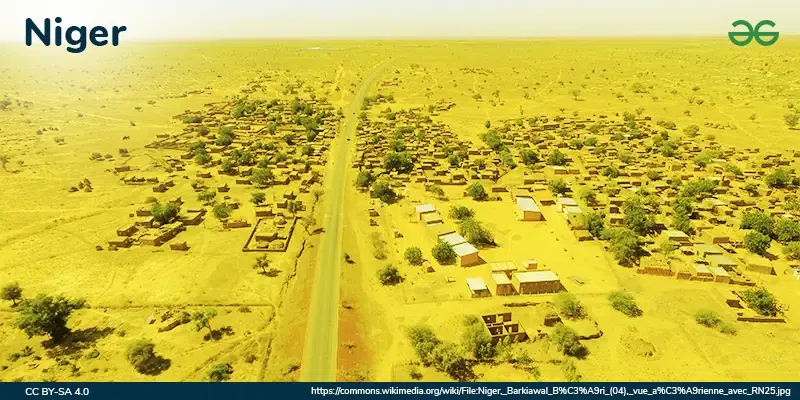
Niger
- GDP: $9.2 billion
- Population: 27,291,636
- Regional Culture: Predominantly Hausa, Zarma-Songhai, and Tuareg ethnic groups with a rich nomadic heritage.
- Government Name: Republic of Niger
- Main Source of Income: Agriculture and uranium mining are primary economic pillars.
- Cause of Poverty: Vulnerability to drought, desertification, and high population growth contribute to economic challenges and poverty.
Niger is a rural country in West Africa with a population of over 20 million people and in which more than 97% of whom are Muslim. It is a country that suffers from multiple earthquakes and has few farms, making it one of the poorest in the world. Also, the Sahara Desert covers 80 percent of its territory and an increasing population depending on small-scale agriculture; the desert presents a huge concern.
8. Malawi
.webp)
Malawi
- GDP: $6.9 billion
- Population: 21,039,999
- Regional Culture: Diverse ethnic groups with a predominant influence of Chewa, Yao, and Nyanja traditions.
- Government Name: Republic of Malawi
- Main Source of Income: Agriculture, particularly tobacco, tea, and sugarcane, is a key economic factor.
- Cause of Poverty: Agricultural challenges, limited access to education and healthcare, and susceptibility to climate-related shocks contribute to widespread poverty.
Malawi is a small country which is located in southeastern Africa, faces enormous economic issues despite its beautiful landscape. Because the country is largely dependent on rain-fed agriculture, it is subject to climate change and changing prices for commodities. While being taken as the poorest country in the world, Malawi’s government remains focused on economic growth, improved education and healthcare, and poverty reduction.
9. Chad
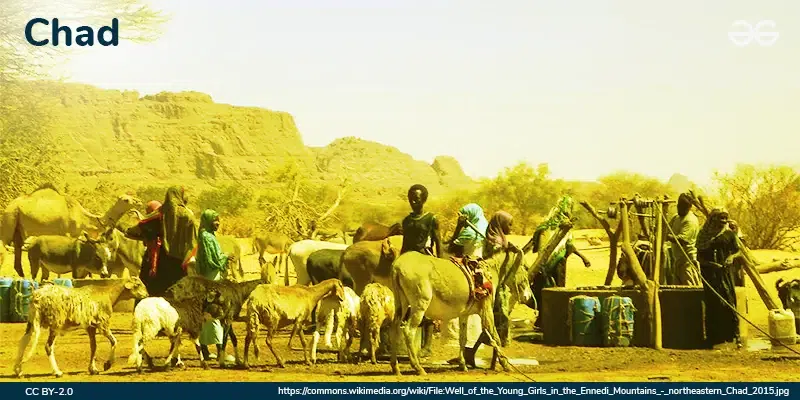
Chad
- GDP: $10.9 billion
- Population: 18,327,841
- Regional Culture: Group of diverse ethnic groups, including Arabs, Sara, and Gorane, each contributing to the country’s cultural richness.
- Government Name: Republic of Chad
- Main Source of Income: The economy relies heavily on oil exports, livestock, and agriculture.
- Cause of Poverty: Political instability, conflicts, and reliance on vulnerable sectors contribute to economic challenges and poverty.
Chad struggled to establish its identity after achieving independence from France. Mis-management, corruption, conflict, and a severe climate did not help the country, and Chad has constantly remained one of Africa’s poorest countries.
For decades, the country has failed to invest in welfare, despite the fact that climate change and drought have reduced agricultural harvests.
10. Liberia
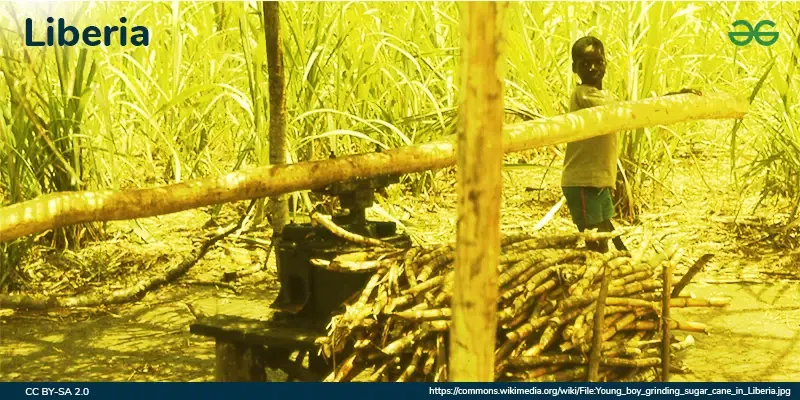
Liberia
- GDP: $10.9 billion
- Population: 5,428,692
- Regional Culture: Diverse ethnicities with a strong influence of indigenous traditions and American colonization heritage.
- Government Name: Republic of Liberia
- Main Source of Income: Mining, particularly iron ore and rubber, forms a significant part of the country’s economy.
- Cause of Poverty: Historical civil wars, economic mismanagement, and dependance on few export commodities contribute to poverty challenges.
Liberia is a low-income country that relies largely on foreign aid and migrant donations. It has an abundance of water, mineral resources, forests, and a favorable climate for agriculture. Iron ore, rubber, diamonds, and gold are its main exports.
When we talk about the poorest country in the world, Liberia also bags a spot. Its ongoing poverty is the result of violent conflicts, including civil wars and pandemics, which have resulted in weak infrastructure and limited services.
Poorest Countries In Each Continent in the World
Several countries in the world are facing financial issues, the majority of which are lacking resources, or infrastructure. Some countries in the world are facing financial problems in recent years due to war and other international crises.
The following section includes the poorest country in the world for each of the continents including Africa, Asia, Australia, Europe, North America, and South America.
1. Poorest Country In Africa
South Sudan is the poorest country in Africa.
South Sudan gained independence from Sudan in 2011. The majority of the population depends on farming, with a lesser minority depending on animal husbandry, and approximately 80% of the population lives in rural areas. Since the current crisis began in December 2013, more than 2 million South Sudanese have sought sanctuary in neighboring nations.
- GDP: $3.9 billion
- Population: 11,104,916
2. Poorest Country In Asia
Yemen has the world’s poorest GDP per capita of $2,136, making it the poorest country in Asia.
However, years of ongoing conflict make finding particular economic data for evaluations hard. Yemen’s poverty is caused by the country’s continuous civil war, corruption, and poor economic management. As a result of the civil conflict, an increasing number of Yemenis are living in poverty. Approximately 79% of the population is impoverished, with 65% classified as extremely poor.
- GDP: $21.05 billion
- Population: 34,449,825
3. Poorest Country In Australia
Tasmania, with incomes 26% below the national income and wealth average, is the Poorest Country in Australia.
Tasmanians work fewer hours or do not work at all, earn less, and produce less than those living in other states.
In October 2012, Tasmania’s unemployment rate was 7.7%, compared to the Australian average of 4.9% – a rate of unemployment that was more than a third higher. The Tasmanian economy’s poor performance was a significant subject in local public debate in 2012.
- GDP: AUD 64,408
- Population: 579000
4. Poorest Country In Europe
Ukraine is Europe’s poorest country
Ukraine faces serious economic issues, with a PPP GDP of $6,700. Despite its great potential and abundant resources, the country has faced political insecurity and ongoing conflicts, which have impacted its economic progress. High unemployment rates, poverty, and restricted access to good education and healthcare all contribute to many Ukrainians’ economic difficulties.
- GDP: $160.50 billion
- Population: 37,050,276
5. Poorest Country In North America
Haiti, North America’s poorest country, is experiencing a fast growth in population, which is exceeding the country’s ability to provide for its citizens. It is often seen as the poorest country in the world.
Haiti suffered severe damage from a massive earthquake in January 2010, which was the country’s worst natural disaster in history, and recovery is still ongoing. Slavery, revolution, deforestation, corruption, debt, and war are all issues that have contributed to Haiti’s political instability, poverty, and bad infrastructure.
- GDP: $20.25 billion
- Population: 11,724,763
6. Poorest Country In South America
Venezuela is South America’s poorest country, with a per capita GDP of $3,641. Unfortunately, the country is currently experiencing a severe financial crisis. The crisis has moved beyond unemployment, and bad economic performance is now hurting the basic quality of life of all individuals. According to the UN, 94% of Venezuelans are today poor.
- GDP: $111.81 billion
- Population: 28,838,499
Role of Organizations in the Development of a Country
International organizations play a crucial role in the development of the poorest country in the world, contributing to various aspects of economic, social, and infrastructural progress. The following points describe how the international organization helps in developing the top 10 poorest countries in the world:
- Economic Assistance: Organizations such as the International Monetary Fund (IMF) and the World Bank provide financial aid, loans, and grants to struggling economies, enabling them to address immediate challenges and invest intheir long-term development projects.
- Healthcare Initiatives: Addressing healthcare challenges is a key priority for many international organizations. International Organization like WHO helps these countries in their development.
- Education and Literacy Programs: Promoting education is fundamental to breaking the cycle of poverty. International Organizations collaborate with governments to implement educational programs, build schools, and enhance literacy rates.
- Infrastructure Development: Investments in infrastructure, such as roads, energy, and technology, for creating the foundations for the economic growth of the country.
- Social Welfare and Empowerment: Organizations actively engage in social welfare projects, focusing on vulnerable groups and marginalized communities.
India’s Poverty Index Report
As per different reports from both national and international agencies, India’s GDP has fallen down but now after the decline in the percentage of poor people’s existence from 24.85% in 2015-16 to 14.96% in 2019-21, there is a great hike in the GDP of a nation.
According to the Global Hunger Index (GHI) report, India ranks 111th out of 125 countries in the world because of highly unhealthy food. There are more than 15% children in total who are categorized as under-nutrition. As the Indian government decided to achieve sustainable development goals by 2030, this report serves as a compass, guiding policymakers, NGOs, and citizens alike toward informed decisions.
Conclusion
Countries like South Sudan, Yemen, Tasmania, Ukraine, Haiti, and Venezuela are among the top 10 poorest countries in the world.
These countries are located in various regions of the world and are facing different challenges, including limited access to resources, political instability, and inadequate infrastructure. Some factors such as income inequality, social development, and quality of life indicators also play crucial roles in understanding the true condition of the poorest country in the world and its GDP. War can also be an important factor that can be considered in any country’s low GDP.
Top 10 Poorest Countries in the World By GDP – FAQs
1. What is the GDP of India?
The Gross Domestic Product of India is $3,750 billion.
2. Which is the richest country in the world?
The United States of America with a GDP of $26,854 billion stands on the top.
3. Why is GDP per capita used to measure any country’s wealth?
GDP per capita divides a country’s GDP by its population, generating an average income per person, which is a usual way to evaluate a country’s wealth.
Share your thoughts in the comments
Please Login to comment...